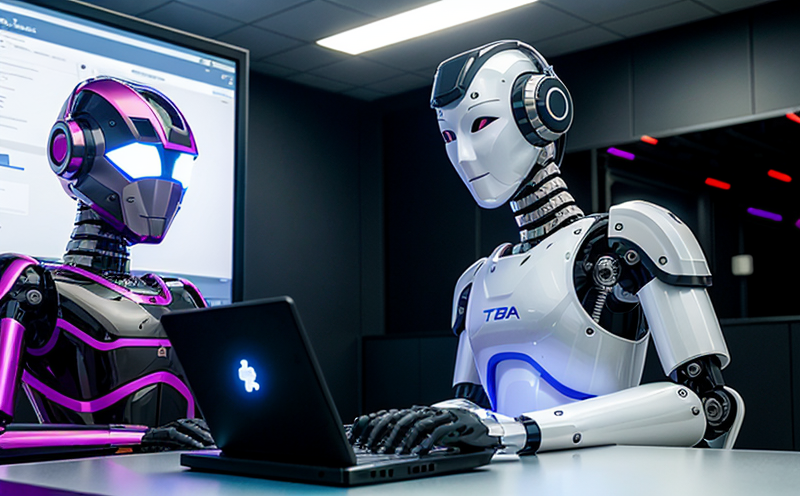ISO/IEC 27400 IoT and Robotics Cybersecurity Risk Assessment
The ISO/IEC 27400 series of standards, including its specific implementation for Internet of Things (IoT) devices and robotics systems, focuses on cybersecurity risk management. This service provides a comprehensive assessment that helps organizations identify, evaluate, and mitigate potential security risks associated with IoT and robotic systems. Understanding the unique challenges posed by these interconnected technologies is crucial in today's rapidly evolving digital landscape.
The service begins with an initial risk analysis, which involves mapping out all relevant assets within the system to understand their interdependencies. This process ensures that no component or connection point goes unchecked. Following this phase comes a detailed threat modeling exercise where potential vulnerabilities are identified and categorized based on likelihood and impact. Our team utilizes advanced tools and methodologies to simulate real-world attack scenarios against your devices, providing insights into how they might behave under various stress conditions.
Once the risks have been thoroughly mapped out, we move onto risk evaluation—a critical step in determining which threats pose the greatest danger to your operations. Here, factors such as asset value, exposure level, and likelihood of exploitation play key roles in prioritizing mitigation efforts. After evaluating these risks, our experts will recommend appropriate countermeasures tailored specifically for each identified threat. These recommendations range from software updates to architectural redesigns depending on what is most effective against the particular risk at hand.
Our service does not stop there; it also includes continuous monitoring and reporting mechanisms designed to track changes over time so that any new vulnerabilities can be addressed promptly before they become exploitable by malicious actors. By leveraging state-of-the-art technologies like machine learning algorithms, we ensure our clients remain protected even as their environments evolve.
It is important to note that ISO/IEC 27400 emphasizes not just the technical aspects of cybersecurity but also the broader organizational implications. A robust risk management strategy requires collaboration between IT professionals and business leaders to ensure alignment with corporate objectives while maintaining compliance with applicable regulations.
This service ensures that your IoT devices and robotic systems are secure against unauthorized access or interference, thereby protecting sensitive information and ensuring reliable performance across all operational domains. With our expertise in both technical implementation and strategic planning, you can trust us to deliver solutions that meet the highest standards of cybersecurity excellence.
Applied Standards
The ISO/IEC 27400 series of standards provides a framework for managing information security risks within organizations. For IoT devices and robotics systems specifically, these guidelines help ensure that all connected components are protected from unauthorized access or interference.
- ISO/IEC 27400
- ISO/IEC 27401 - Information Security Management Systems
- ISO/IEC 27402 - Code of Practice for IT Security Incident Response
- ISO/IEC 27403 - Information Security Risk Management
- ISO/IEC 27404 - IT Security Incident Response Planning
- ISO/IEC 27405 - Information Security Risk Assessment Guidance
The application of these standards ensures that cybersecurity measures are integrated into the design, development, deployment, and maintenance processes for IoT devices and robotics systems.
Industry Applications
In today's interconnected world, industries across sectors such as healthcare, manufacturing, transportation, and agriculture heavily rely on automated systems. These systems must be reliable, efficient, and secure to protect patient data, sensitive business information, and public safety.
For instance, in the healthcare sector, robotic assistants used for surgeries or patient care need constant monitoring to ensure they function correctly without exposing patients' medical records to unauthorized users. Our ISO/IEC 27400 IoT and Robotics Cybersecurity Risk Assessment helps hospitals maintain compliance with HIPAA regulations while enhancing their overall security posture.
Manufacturing plants benefit greatly from robotic arms that perform tasks like welding or assembly lines. These machines often communicate wirelessly, making them prime targets for cyberattacks. By conducting a thorough risk assessment according to ISO/IEC standards, manufacturers can protect critical infrastructure and prevent downtime caused by cyber incidents.
The transportation industry also sees increasing use of autonomous vehicles equipped with IoT capabilities. Ensuring secure communication between these cars and traffic management systems is essential for reducing accidents and improving efficiency. Our service ensures that all connected components are safeguarded against potential threats, thus contributing to safer roads and smoother travel experiences.
Agricultural drones used in precision farming collect vast amounts of data about soil conditions, crop health, etc., which can be invaluable when making informed decisions. However, this same data could be misused if not adequately protected. With our cybersecurity risk assessment service based on ISO/IEC standards, farmers gain peace of mind knowing that their operations are resilient against unauthorized access or manipulation.
Environmental and Sustainability Contributions
- Reducing energy consumption: By identifying inefficiencies early in the design process through our risk assessment service, organizations can implement more efficient systems leading to lower power usage.
- Promoting sustainable practices: Ensuring secure communication between various components of an IoT or robotics system prevents failures that would otherwise result in waste materials and energy during troubleshooting processes.
- Enhancing resource utilization: Our service helps organizations optimize their resources by preventing downtime due to cyberattacks, thus ensuring continuous operation even under challenging conditions.
The environmental impact of technology is significant; however, when implemented correctly, IoT devices and robotics systems can contribute positively towards sustainability goals. By protecting these assets against security threats, we encourage responsible use while minimizing unnecessary expenditures that could otherwise harm the environment.





